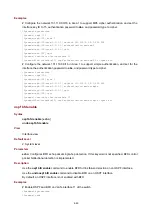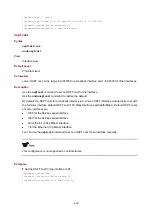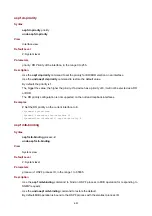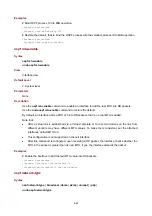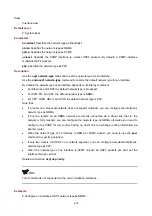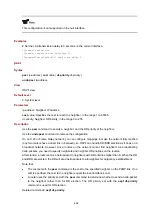
4-63
View
System view
Default Level
3: Manage level
Parameters
process-id
: OSPF process ID, in the range 1 to 65535.
ifauthfail
: Interface authentication failure information.
ifcfgerror
: Interface configuration error information.
ifrxbadpkt
: Information about error packets received.
ifstatechange
: Interface state change information.
iftxretransmit
: Packet receiving and forwarding information.
lsdbapproachoverflow
: Information about cases approaching LSDB overflow.
lsdboverflow
: LSDB overflow information.
maxagelsa
: LSA max age information.
nbrstatechange
: Neighbor state change information.
originatelsa
: Information about LSAs originated locally.
vifauthfail
: Virtual interface authentication failure information.
vifcfgerror
: Virtual interface configuration error information.
virifauthfail
: Virtual interface authentication failure information.
virifrxbadpkt
: Information about error packets received by virtual interfaces.
virifstatechange
: Virtual interface state change information.
viriftxretransmit
: Virtual interface packet retransmission information.
virnbrstatechange
: Virtual interface neighbor state change information.
Description
Use the
snmp-agent trap enable ospf
command to enable the sending of SNMP traps for a specified
OSPF process. If no process is specified, the feature is enabled for all processes.
Use the
undo snmp-agent trap enable ospf
command to disable the feature.
By default, this feature is enabled.
See
SNMP Configuration Configuration Commands
in the
Network Management and Monitoring
Command Reference
for related information.
Examples
# Enable the sending of SNMP traps for OSPF process 1.
<Sysname> system-view
[Sysname] snmp-agent trap enable ospf 1
spf-schedule-interval
Syntax
spf-schedule-interval
maximum-interval
[
minimum-interval
[
incremental-interval
] ]
undo spf-schedule-interval

